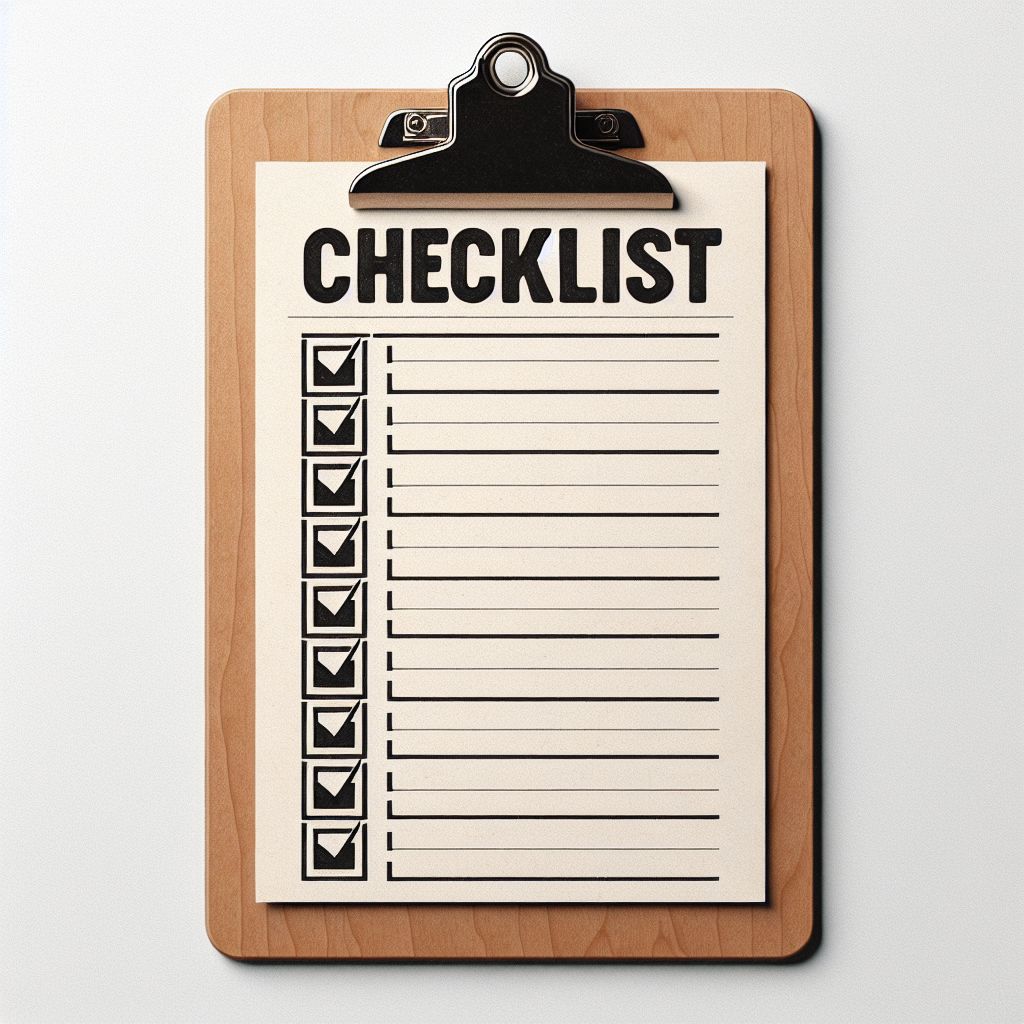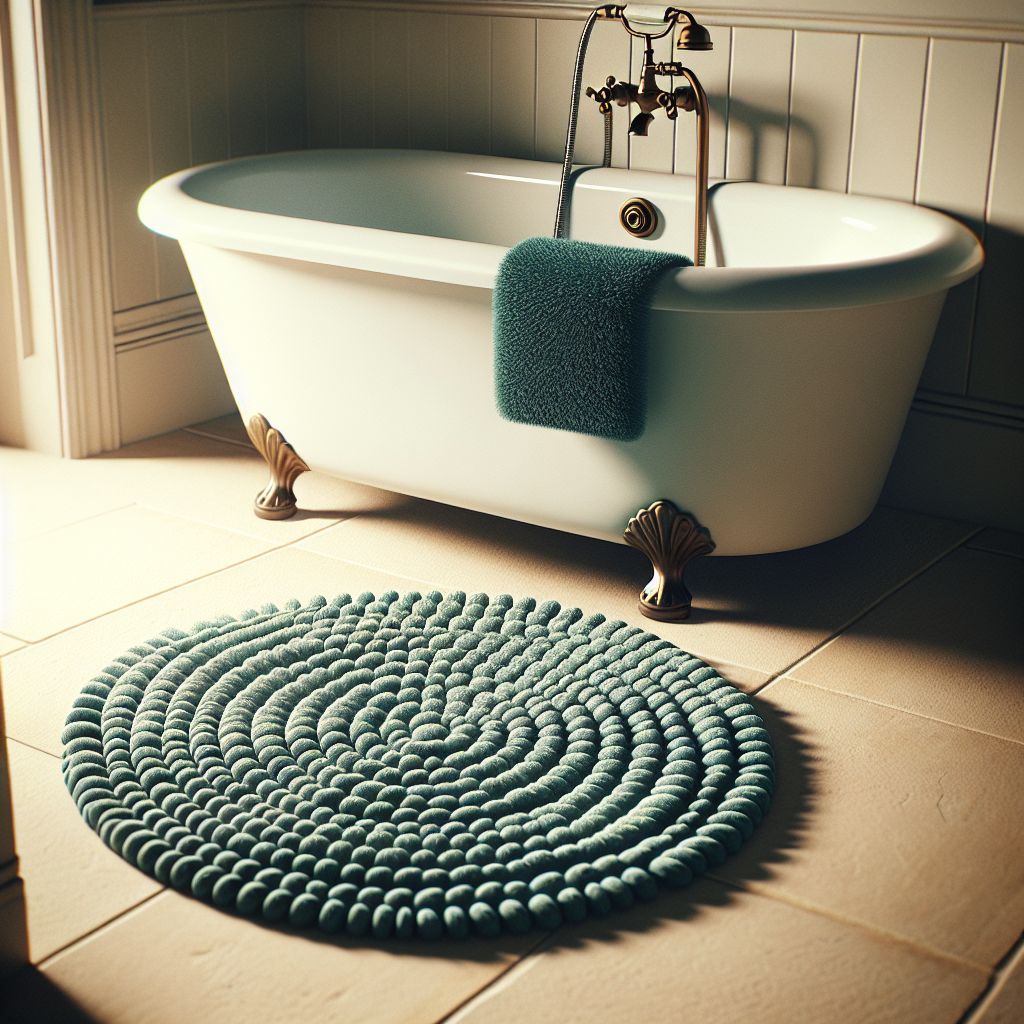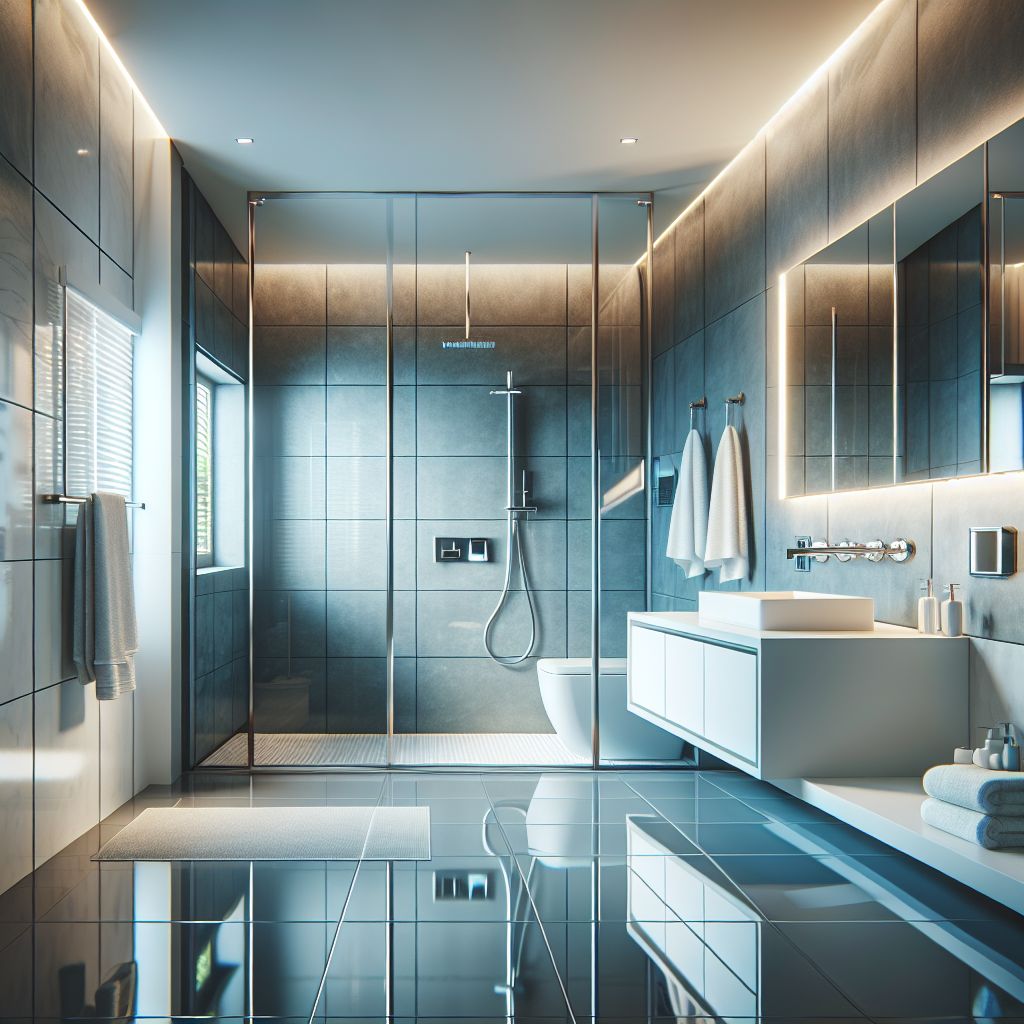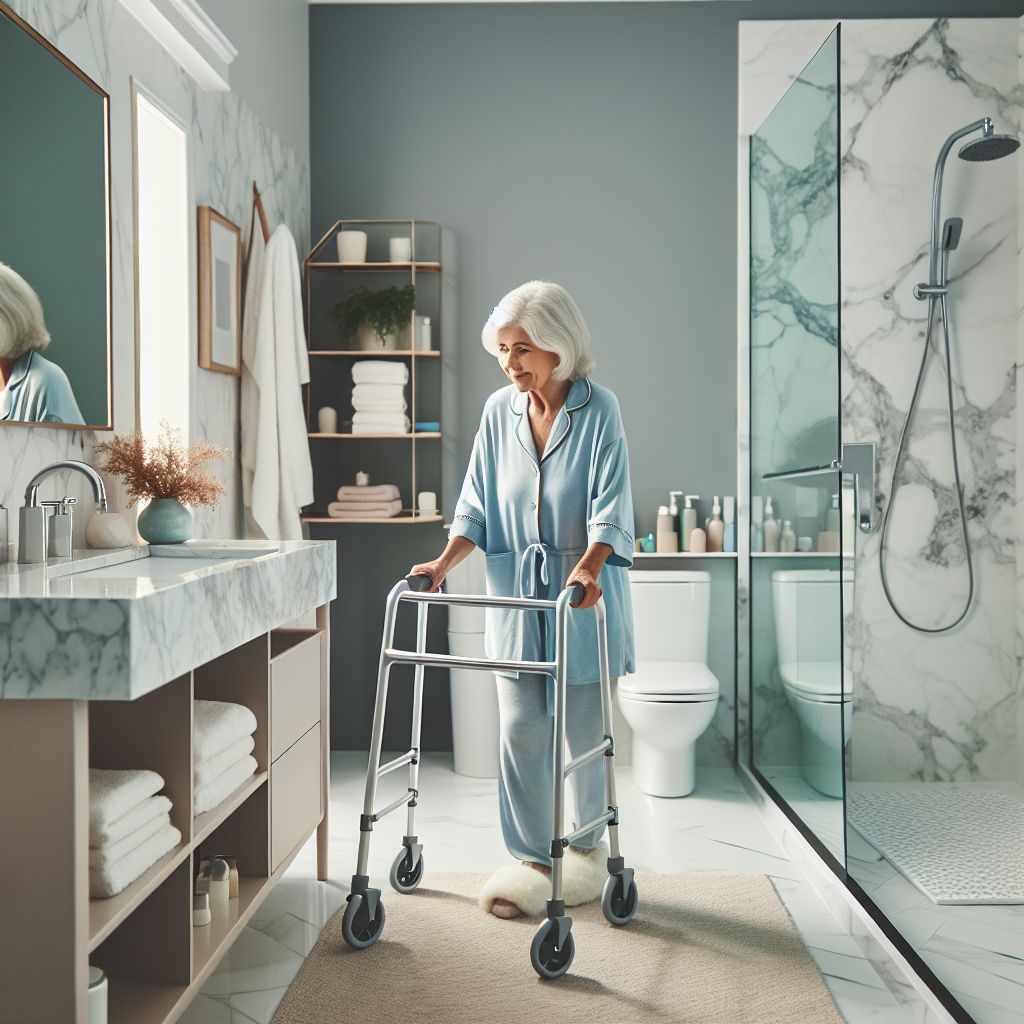
Key Takeaways
-
Understand the common risks in bathroom areas to prevent accidents.
-
Identify and address the slippery spots that could lead to falls.
-
Learn how to check and improve the safety of your bathroom fixtures.
-
Discover the top non-slip mats and where to place them for maximum safety.
-
Gain insight into simple upgrades that can make a big difference in bathroom safety.
Step Safely: Your Blueprint for a Hazard-Free Haven
Transforming your bathroom into a sanctuary of safety doesn’t have to be a daunting task. With a few simple updates and the right know-how, you can create a space that not only looks good but also ensures the well-being of everyone who steps inside. Let’s walk through the essentials of crafting a bathroom that’s as secure as it is stylish.
Assessing Risks: Starting with the Basics
Before we start adding safety features, let’s take a look at what we’re dealing with. The bathroom might seem like a small space, but it’s full of potential hazards. Wet floors, sharp corners, and small spaces can all pose risks, especially for kids and seniors. The first step to a safer bathroom is to understand these risks so you can effectively plan your safety upgrades.
Slippery Culprits: Identifying High-Risk Zones
Remember, water is the main villain when it comes to bathroom slips and falls. Keep an eye out for areas that frequently get wet, like the floor around your bathtub or shower and the space near the sink.
These zones are where you’ll want to focus your attention first. Look for puddles after a shower or bath, and watch out for splashes around the sink. It’s these seemingly insignificant details that can make a huge difference in preventing accidents.
Fixture Foci: Evaluating Toilets, Tubs, and Sinks
Now, let’s turn our attention to the fixtures themselves. Toilets, tubs, and sinks are used daily, making them critical points to secure for safety. Check for loose fittings or unstable elements that could cause trouble. A wobbly toilet seat or a sink that’s not properly anchored can be an accident waiting to happen.
Also, consider the height and accessibility of these fixtures. Are they easy to reach and use for all members of your household? If not, it might be time to think about adjustments or upgrades that can make them more user-friendly.
Fortifying Foundations: Non-Slip Solutions
With the risks assessed, it’s time to fortify your bathroom against falls. Non-slip solutions are your first line of defense. They’re easy to install and come in various styles to match your decor. Plus, they provide peace of mind knowing that you’ve taken a big step towards a safer space.
Tread Carefully: Best Non-Slip Mats for Floors and Tubs
When it comes to non-slip mats, you’ve got options. But not all mats are created equal. You want to look for mats with strong suction grips on the bottom that will stay in place even when wet. The surface should be textured for extra traction, and the material should be mold and mildew resistant for hygiene and longevity.
Place these mats strategically in high-risk areas. A large mat by the shower can catch drips, while a smaller one right outside the tub can provide a safe spot to step out onto. Remember, a mat inside the tub can help prevent slips while bathing, making them essential for every household.
Secure Footing: When and Where to Install Grip Tape
Think of grip tape as the secret superhero of bathroom safety. It’s a quick fix for slippery surfaces, and you can apply it almost anywhere. Focus on places like the edges of steps, if you have them, or even along the floor in front of the sink where wet feet might go. The key is to find the spots where you’re most likely to slip and secure them with this sturdy tape.
Pro tip: Dry fit your grip tape before peeling off the backing. This ensures you cut the right lengths and place them exactly where they need to be for maximum safety.
Grip tape comes in clear or decorative patterns, so it doesn’t have to look industrial. You can maintain the aesthetic of your bathroom while making it a whole lot safer.

Grab Bars: Gripping Safety
Grab bars are not just for hospitals or public restrooms; they are a smart addition to any home bathroom. They provide stability and support for everyone, whether you’re simply stepping out of the tub or need a bit more assistance moving around.
Supportive Installment: Placement and Types of Grab Bars
When it comes to installing grab bars, placement is everything. You’ll want them where they can be most effective: alongside the toilet, inside the shower, and next to the bathtub. As for types, there are suction-based bars for a non-permanent solution and wall-mounted bars for a more secure option.
Remember to choose bars that can support the weight of the heaviest person in your home. They should have a non-slip grip and be easy to hold onto, even with wet hands.
DIY Done Right: Step-by-Step Grab Bar Installation
Installing grab bars might seem intimidating, but with the right tools and instructions, it’s a project you can tackle in an afternoon. Start by locating the studs in your walls, as these will provide the most support. Use a stud finder and mark the spots clearly.
Next, hold the grab bar against the wall and mark where the screws will go. Drill pilot holes, then secure the bar with screws long enough to reach into the studs. Give it a good tug to ensure it’s firmly in place.
And just like that, you’ve significantly increased the safety of your bathroom.
Electrical Hazards: Preventing Shocking Surprises
Electricity and water are a dangerous mix. That’s why it’s critical to ensure all electrical fixtures in your bathroom are up to code and away from water sources. Check outlets for GFCI (ground fault circuit interrupter) labels, which help prevent shocks.
Water and Watts: Maintaining Safe Distances
Keep all electrical appliances and devices at a safe distance from water. This means hairdryers, shavers, and radios should be stored away from sinks and tubs. If you have outlets near water sources, consider moving them or at least ensure they’re GFCI protected.
Always dry your hands before handling switches or outlets, and teach kids to do the same. It’s a simple habit that can prevent a serious accident.
Circuit Checkup: Inspecting and Updating Bathroom Wiring
Older homes might need a wiring update to handle modern electrical demands safely. If your lights flicker or you often trip the breaker, it’s time for a circuit checkup. Hire a licensed electrician to inspect your wiring and make any necessary updates.
Upgrading to GFCI outlets and ensuring your lighting is waterproof are two key steps to a safer bathroom. These changes can protect you and your family from electrical mishaps.

Lighting the Way: Clear Visibility for Safety
Good lighting in your bathroom is about more than just aesthetics; it’s a critical component of safety. Proper illumination can help prevent accidents by ensuring that you can see clearly, reducing the risk of slips and falls. It’s important to have a well-lit path to and from the bathroom, especially during the night when visibility is low.
Luminous Layouts: Optimal Bathroom Lighting Arrangement
When planning your bathroom lighting, aim for a layered approach. Start with overhead lighting to brighten the entire space. Then add task lighting around the mirror for activities like shaving or applying makeup. Finally, consider accent lighting to illuminate any dark corners or steps within the bathroom.
Make sure all light fixtures are rated for bathroom use, as moisture can damage lights not designed for such environments. LED bulbs are a great choice for their longevity and energy efficiency. Plus, they come in a range of color temperatures, so you can choose a warm light for a cozy feel or a cool light for a more natural look.
Nighttime Navigation: The Best Nightlights for Bathrooms
For those midnight trips to the bathroom, a nightlight is your best friend. It provides enough light to guide you safely without fully waking you up. Look for nightlights with motion sensors that turn on automatically when you enter the room and turn off after you leave, saving energy and hassle.
Choose nightlights that emit a soft glow rather than a harsh beam to prevent disorientation. Some models even offer color-changing options, allowing you to select a soothing hue that won’t disrupt your sleep cycle.
Childproofing: Keeping the Little Ones Safe
Children are naturally curious, and the bathroom is full of intriguing but potentially dangerous items. Childproofing is essential to keep your little ones safe from harm. It involves securing cabinets and drawers, as well as ensuring that the bathtub and toilet are not hazards.
Locks and Latches: Securing Cabinets and Drawers
Start by installing childproof locks on cabinets and drawers that contain hazardous items like cleaning supplies or medicines. These locks are simple to fit and operate for adults, but they’ll keep curious hands out. Remember to keep dangerous items on high shelves or in locked storage, even if you think they’re out of reach.
Drowning Deterrence: Bathtub and Toilet Safety Measures
Never leave a child unattended in the bathroom, especially near water. A few inches of water in a bathtub can pose a drowning risk. Install a lock on the bathroom door to keep children out when unsupervised, and consider a tub spout cover to protect against bumps and bruises.
For toilet safety, a simple latch can keep the lid closed. This prevents not only potential drowning but also keeps toys and other items from being thrown in, which can cause clogs and other plumbing issues.

Senior Safety: Special Considerations for Elders
As we age, our mobility and balance can decline, making bathroom safety even more critical. Seniors may need additional features to ensure their safety and maintain independence while using the bathroom.
Consider installing a raised toilet seat to make sitting down and standing up easier. Walk-in tubs or showers with a bench can also provide stability and comfort. Textured flooring, grab bars, and handheld showerheads are other upgrades that can make a significant difference for elder safety.
Ease of Access: Walk-In Tubs and Seating Options
For those with limited mobility, traditional bathtubs can pose a significant risk. Walk-in tubs are an excellent solution, offering easy access with a door that seals tightly to prevent leaks. They often come with built-in seats, anti-slip floors, and handrails, providing a safer bathing experience. If a full tub replacement isn’t an option, consider adding a bath seat or bench. These allow for seated showering, reducing the risk of falls and making personal care more accessible.
Heightened Hygiene: Adjusting for Limited Mobility
Hygiene is paramount, but it shouldn’t come at the cost of safety. For those with limited mobility, simple tasks can become challenging. Consider installing a handheld showerhead to allow for seated showering, and ensure all personal care products are within easy reach. Soap dispensers can be mounted on the wall, and shower caddies can be placed at a convenient height. These adjustments not only improve safety but also help maintain independence and dignity in personal hygiene.
Remember, the bathroom should be a secure place for everyone in the home. With these measures in place, you can help ensure that your loved ones of all ages can navigate the bathroom safely and with confidence.
Bathroom Emergency Plan: Being Prepared
No one likes to think about emergencies, but being prepared can make all the difference. A bathroom emergency plan should include easy access to help and medical supplies. Ensure everyone in the household knows what to do in case of a slip, fall, or other accidents. Having a plan in place provides peace of mind and can help prevent panic in an emergency situation.
First Aid Fundamentals: Stocking a Bathroom First Aid Kit
A well-stocked first aid kit is a must-have in any bathroom. It should include essentials like bandages, antiseptic wipes, adhesive tape, and scissors. Consider adding items tailored to your family’s needs, such as specific medications or allergy treatments. Place the kit in an easily accessible location, and check it regularly to replace any used or expired items.
Quick Call Capability: Accessing Help in a Bathroom Emergency
In an emergency, time is of the essence. Make sure there’s a way to call for help from the bathroom, whether it’s a waterproof phone, an emergency pull cord, or a personal alert system. Teach children how to dial emergency services and consider a list of important numbers posted in a visible location. For those with smart home devices, setting up voice commands can also provide a quick way to call for help without needing to reach for a phone.

Frequently Asked Questions (FAQ)
How often should I check my bathroom for safety hazards?
Regular checks are key to maintaining a safe bathroom. A good rule of thumb is to do a thorough walk-through every six months. However, if there are elderly individuals or children in the home, you might want to check more frequently. Keep an eye out for loose tiles, slippery spots, or any wear and tear on safety devices like grab bars or non-slip mats. Quick action on these potential hazards can prevent accidents and keep your bathroom a safe space for everyone.
Can I install grab bars without professional help?
Yes, you can install grab bars on your own, provided you have the right tools and a basic understanding of DIY principles. The key is to ensure they’re securely attached to wall studs, which provide the necessary support to hold the weight. A stud finder, drill, level, and the proper screws are essential for this task. Follow the manufacturer’s instructions carefully, and don’t hesitate to reach out to a professional if you’re unsure about the process. Safety is paramount, so if there’s any doubt, it’s worth the investment to have them installed professionally.
Are there specific brands of non-slip mats you recommend?
While I don’t endorse specific brands, I suggest looking for non-slip mats with strong suction capabilities and anti-microbial properties. Mats should be easy to clean and designed for high moisture areas. Brands that offer a good balance of functionality, durability, and design tend to be customer favorites. Read reviews and look for products with high ratings and positive feedback about their non-slip performance and ease of maintenance.
What are the top safety considerations for bathrooms used by children?
Children’s safety in the bathroom is all about anticipation and prevention. Here are the top considerations:
-
Secure cabinets and drawers with childproof locks to keep harmful substances out of reach.
-
Use toilet locks to prevent drowning risks and keep the toilet lid closed.
-
Install anti-scald devices on faucets to prevent burns from hot water.
-
Keep electrical appliances out of reach and away from water sources.
-
Place non-slip mats in the bathtub and on the bathroom floor to prevent slips.
-
Set the water heater temperature to 120°F or lower to prevent accidental scalding.
-
Never leave children unattended in the bathroom, especially during bath time.
What adjustments are necessary for a bathroom to be considered senior-friendly?
Creating a senior-friendly bathroom is about ensuring accessibility and minimizing risks. Adjustments include:
-
Installing grab bars near the toilet, shower, and bath for support.
-
Using raised toilet seats with handles for easier sitting and standing.
-
Equipping showers with non-slip mats, shower seats, and handheld showerheads.
-
Ensuring the bathroom is well-lit to improve visibility.
-
Installing lever faucets that are easier to use than knobs.
-
Considering a curbless shower or walk-in tub to eliminate tripping hazards.
-
Keeping essential items within easy reach to avoid overstretching or bending.
In conclusion, transforming your bathroom into a safe and accessible space is a step-by-step process that involves evaluating risks, making necessary adjustments, and being proactive about maintenance. Whether you’re a DIY enthusiast or prefer to seek professional help, the key is to prioritize safety without compromising on the comfort and style of your space. By following the comprehensive checklist and guide provided, you can create a bathroom environment that is secure for all ages and abilities. Remember, a safe bathroom is a cornerstone of a happy, healthy home, and with the right measures in place, you can ensure peace of mind for you and your loved ones.



